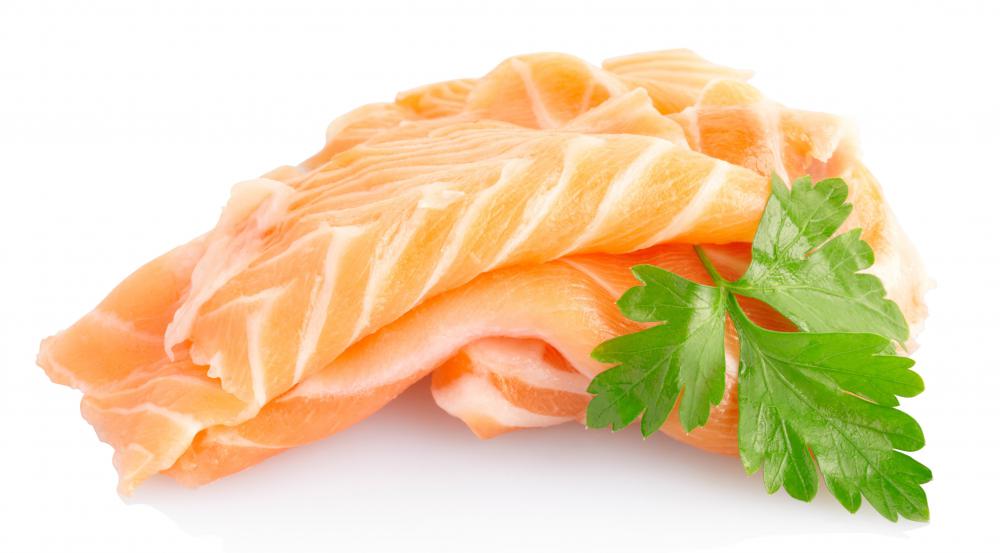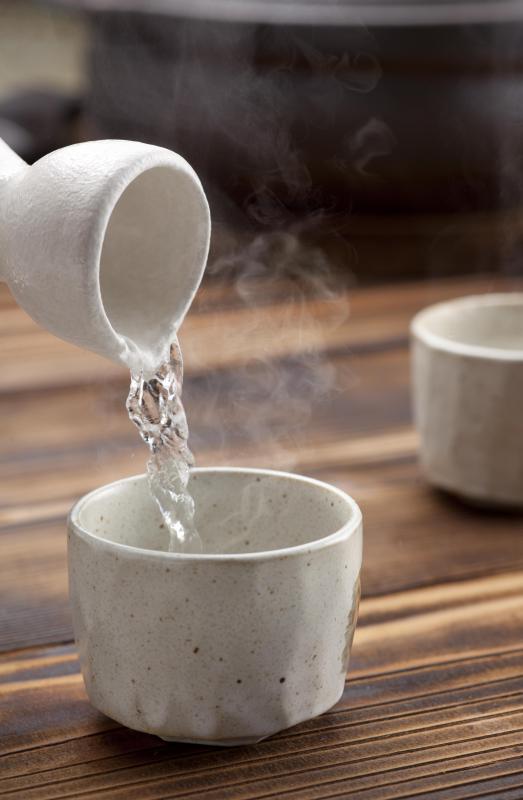At DelightedCooking, we're committed to delivering accurate, trustworthy information. Our expert-authored content is rigorously fact-checked and sourced from credible authorities. Discover how we uphold the highest standards in providing you with reliable knowledge.
What Should I Know About Sushi Etiquette?
Eating sushi can be a great experience, especially in a traditional establishment. Many of the rules of sushi etiquette are common sense, but there are a few things about eating sushi which are unique. Observing all of the aspects of sushi etiquette is a mark of respect to the itamae, or chef, and to the restaurant.
A reputable establishment will have an open bar area behind which the itamae works. People who want to talk to the chef and socialize with other patrons should sit at the bar, while people who do not should opt for a table. Once people are seated, a waitress may bring warm towels which are used to wipe the hands before being returned to the waitress. The waitress may also offer tea or sake.

People who are sitting at the bar should order sushi items from the chef, and everything else from the waitress. Sashimi, for example, would be ordered from the chef, while a bowl of miso soup would be ordered from the waitress. Many people find that their sushi experience is more enjoyable if they ask the chef to make recommendations. The chef will decide which sushi dishes are best for the patron, and select the best timing for each dish. Patrons should note that asking “what's fresh” is highly offensive, as it implies that the restaurant has fish which is not fresh.

Sushi establishments expect people to order several times, as only one to three kinds of sushi are brought out at once. It is very important to leave a clean plate in the rules of sushi etiquette, and people should avoid overordering. It also helps to know the different kinds of sushi: nigiri is made with pieces of raw fish and vinegared rice, while sashimi is plain fish, and makizushi is rolled sushi. Sushi is supposed to be eaten in one bite, and once bitten into, sushi should never be placed back on the plate.

If sushi is being taken from a communal plate, the broad end of the chopsticks should be used, rather than the end which is placed in the mouth. People should never pass pieces of sushi to each other on chopsticks, because this is reminiscent of Buddhist funeral rites and a violation of sushi etiquette. In the case of nigiri, the food should be dipped into the shoyu with the fish side down, as the rice will absorb too much sauce, causing a flavor imbalance.

When not in use, chopsticks can be left on the chopstick rest. If a chopstick rest is not provided, the chopsticks should be laid across the shoyu dish, at an angle parallel to the bar. Chopsticks should never be rested on the side of a plate or stuck in a dish at a vertical angle.
Many sushi establishments offer side dishes such as pickled ginger, which are used as palate cleansers. They are meant to be eaten between bites, rather than being used to dress the sushi. The chef creates each piece of sushi with a careful balance, and adding side dishes will be perceived as an insult in sushi etiquette. If soup is ordered, it may come without a spoon, in which case it is appropriate to drink the soup from the bowl, taking large pieces out of the soup with chopsticks.

The itamae may appreciate the gift of a beer or glass of sake from the patron if he or she is working in the evening, although this is not required. Chefs also greatly appreciate it when people show interest and respect, and they are often happy to provide off-menu dishes or tutorials to customers who are genuinely enthusiastic about sushi.
AS FEATURED ON:
AS FEATURED ON:
















Discuss this Article
Post your comments